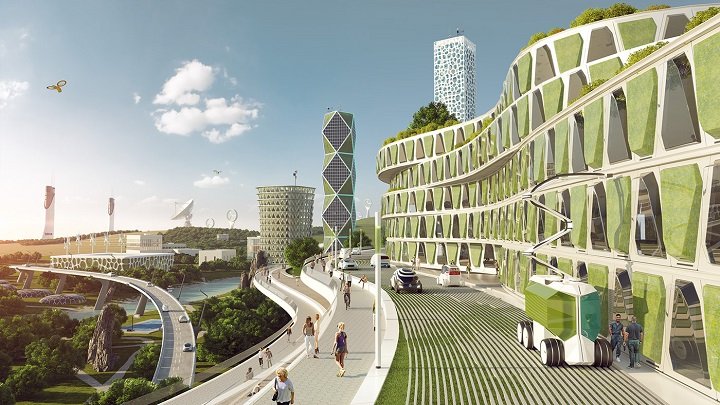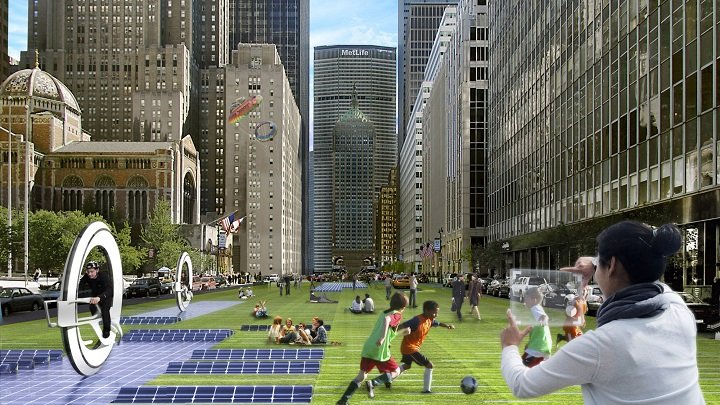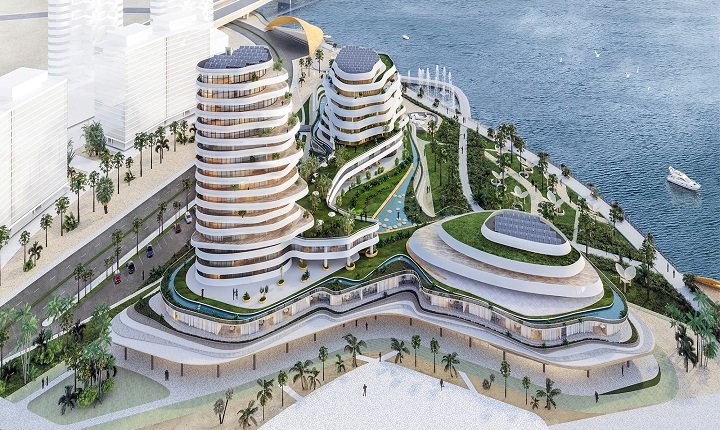
Building the Urban Future cities are developing at a fast pace. As more individuals move to urban ranges, it’s basic to think almost how we can construct cities that are not as it were useful but too economical and pleasant to live in. This is what “building the urban future” is all almost. It implies planning cities that can bolster future eras, are naturally inviting, and move forward the quality of life for all.
In this web journal, we’ll investigate what building the urban future implies, why it’s critical, and how we can make cities that meet the needs of both individuals and the planet.
What Does Mean of Building the Urban Future?

Building the urban future implies arranging and making cities that will meet the needs of future eras. It’s around considering ahead and creating cities that can handle populace development, natural challenges, and social changes. These cities ought to be keen, green, and comprehensive, advertising a superior quality of life for everyone.
Cities play a colossal part in the world nowadays. As cities develop, so do their challenges. From packed boulevards to contamination and squander, cities must advance to handle these issues. That’s where building the urban future comes in—it’s around tackling today’s issues and planning for tomorrow’s challenges.
Why is Building the Urban Future Important?
Rapid Urbanization
Urbanization is happening speedier than ever. By 2050, the Joined together Countries predicts that around 68% of the world’s populace will live in urban ranges. Without appropriate arranging, cities may battle to adapt with this development, driving to stuffing, contamination, and expanded imbalance. Building the urban future guarantees that cities can handle this development in a maintainable way.
Environmental Impact
Cities are major donors to climate alter, producing a critical sum of carbon emanations. They expend gigantic sums of vitality and assets, which can hurt the environment. Planning greener cities—those that utilize renewable vitality, advance open transportation, and diminish waste—helps diminish their natural impression. By centering on supportability, cities can gotten to be portion of the arrangement to climate change.
Quality of Life
Cities are where most individuals live, work, and play. The plan of a city significantly influences its residents’ quality of life. Great urban arranging can lead to more beneficial, more secure, and more pleasant spaces. Building the urban future implies making places where individuals need to live—places with parks, great schools, clean discuss, and dynamic communities.
Key Components of Building the Urban Future
To construct the cities of the future, we require to center on a few key components. These incorporate supportability, innovation, foundation, and social inclusion.
1. Feasible Cities
Sustainability is at the heart of building future cities. A economical city meets the needs of the display without compromising the capacity of future eras to meet their possess needs. Here’s how we can make cities more sustainable:
- Green Buildings: Buildings in the future require to be energy-efficient, utilizing less water, vitality, and other assets.
- Public Transportation: Cities require to advance the utilize of open transportation like buses, trams, and cable cars. Empowering individuals to utilize these frameworks instep of cars makes a difference diminish contamination and activity congestion.
- Parks and Green Spaces: Parks, gardens, and other green spaces make strides discuss quality, give recreational openings, and boost mental wellbeing. Future cities require to join bounty of these ranges to keep inhabitants solid and happy.
2. Shrewd Cities of Building the Urban Future
Technology is revolutionizing the way cities work. A “smart city” employments computerized innovation to make strides administrations and unravel issues. Here are a few ways innovation is forming the urban future:
- Smart Framework: Sensors and information can be utilized to oversee activity, diminish vitality utilize, and move forward open security. For case, savvy activity lights can diminish blockage by altering their timings based on real-time activity conditions.
- Connected Gadgets: In savvy cities, everything from streetlights to squander containers can be associated to the web, making a difference city authorities oversee assets more efficiently.
- Digital Administrations: Numerous cities are utilizing innovation to give superior administrations to inhabitants. For occurrence, apps can offer assistance individuals discover stopping, pay bills, or report issues like broken streetlights.
3. Solid Infrastructure
Infrastructure is the spine of any city. It incorporates everything from streets and bridges to control lattices and water frameworks. Building the urban future implies contributing in solid, solid foundation that can bolster future development. This includes:
- Resilient Framework: Cities require to construct foundation that can withstand common calamities like surges, seismic tremors, and storms. This is particularly imperative as climate alter leads to more extraordinary climate events.
- Energy-Efficient Frameworks: Cities of the future require to contribute in renewable vitality sources like sun powered and wind control to diminish their carbon impressions. Energy-efficient frameworks too offer assistance spare cash and diminish the request for non-renewable resources.
4. Comprehensive Cities
Building comprehensive cities implies making beyond any doubt that everybody has get to to lodging, instruction, healthcare, and transportation. It too implies making spaces that are inviting and open to all, counting individuals with inabilities. Here’s how we can construct more comprehensive cities:
- Affordable Lodging: As cities develop, lodging costs frequently rise, making it harder for individuals to manage a put to live. Future cities require to center on giving reasonable lodging alternatives for all residents.
- Public Spaces for All: Parks, libraries, and other open spaces ought to be planned for everybody, not fair certain bunches. This implies making these spaces open to individuals of all ages, capacities, and backgrounds.
- Social Programs: Cities require to offer programs that bolster marginalized communities, counting the elderly, low-income families, and immigrants.
Examples of Cities Driving the Way
Some cities around the world are as of now taking steps toward building the urban future. Let’s see at a few examples:
- Copenhagen, Denmark: Copenhagen is considered one of the greenest cities in the world. It points to gotten to be carbon-neutral by 2025 through a center on renewable vitality, bike-friendly lanes, and energy-efficient buildings.
- Singapore: Singapore is known for its utilize of innovation to make a shrewd city. It has executed shrewd activity frameworks, cashless installments, and indeed mechanical cleaning services.
- Bogotá, Colombia: Bogotá has contributed intensely in its open transportation framework, counting committed transport paths and bicycle ways. This has made a difference diminish activity blockage and contamination in the city.
The Challenges of Building the Urban Future

While the thought of building the urban future is energizing, it comes with challenges. Cities must overcome issues like:
- Cost: Building economical and keen cities requires critical venture. Numerous cities, particularly in creating nations, may not have the money related assets required to execute these changes.
- Political Will: Governments require to be committed to the long-term arranging and arrangements required to construct future cities. This incorporates working with businesses, communities, and other stakeholders.
- Inequality: As cities develop, there’s a hazard that certain bunches will be cleared out behind. Guaranteeing that everybody benefits from urban development—regardless of their salary, race, or background—is basic to making reasonable and comprehensive cities.
Conclusion:
Building the urban future is significant for making cities that are feasible, savvy, and comprehensive. As we see ahead, it’s clear that cities will proceed to develop and alter. By centering on supportability, innovation, solid foundation, and inclusivity, we can make urban situations that make strides the quality of life for everybody whereas ensuring the planet.
As we move forward, it’s imperative to back arrangements and developments that advance these objectives. Building the urban future isn’t fair around making way better cities—it’s almost building a superior future for all.